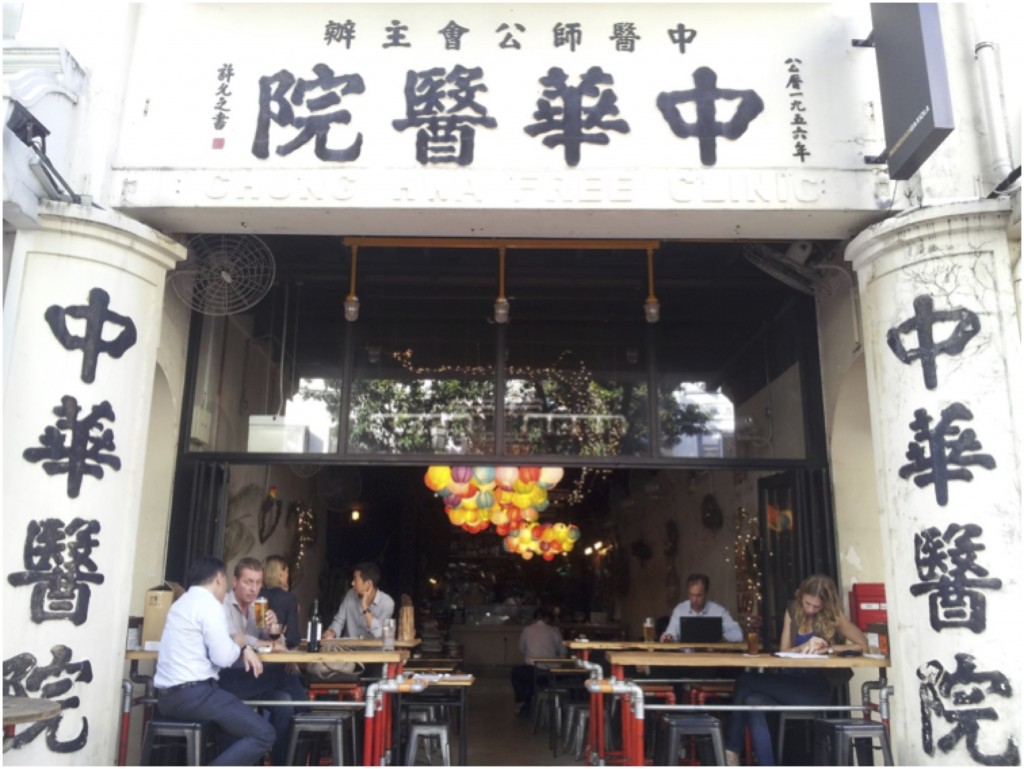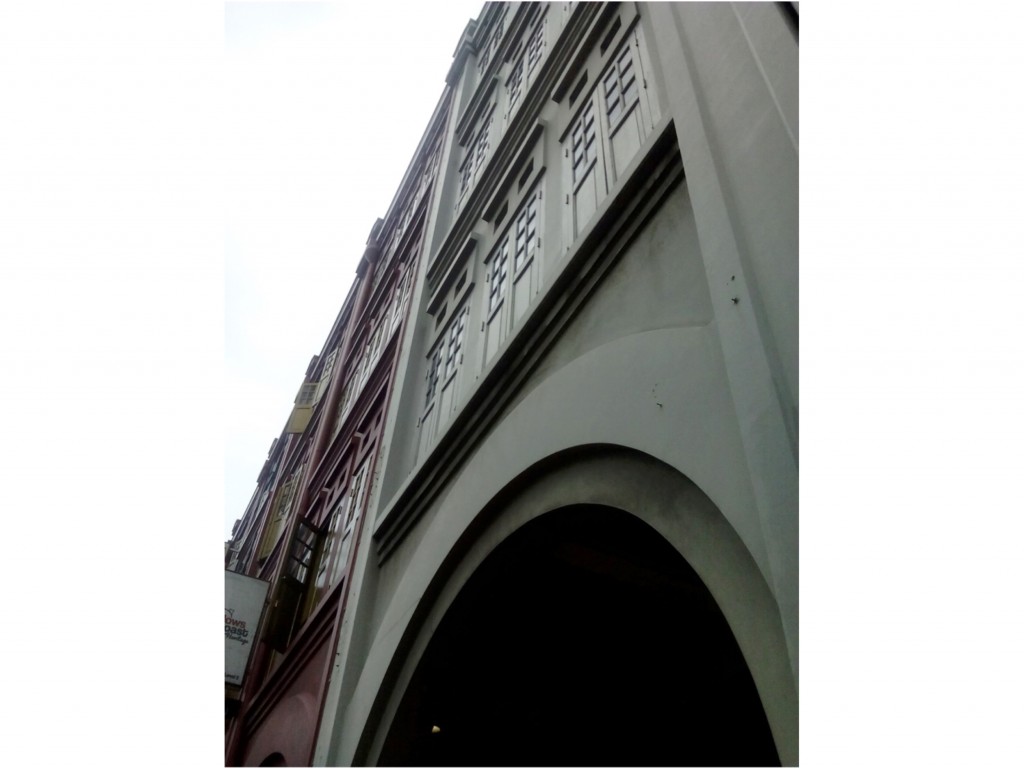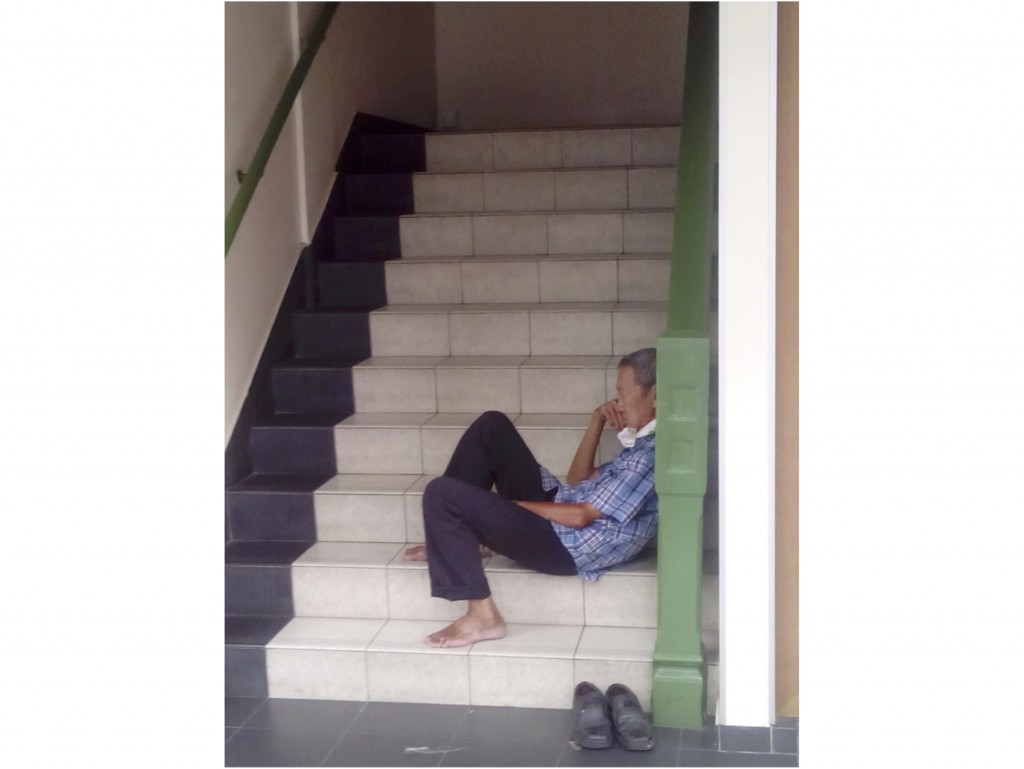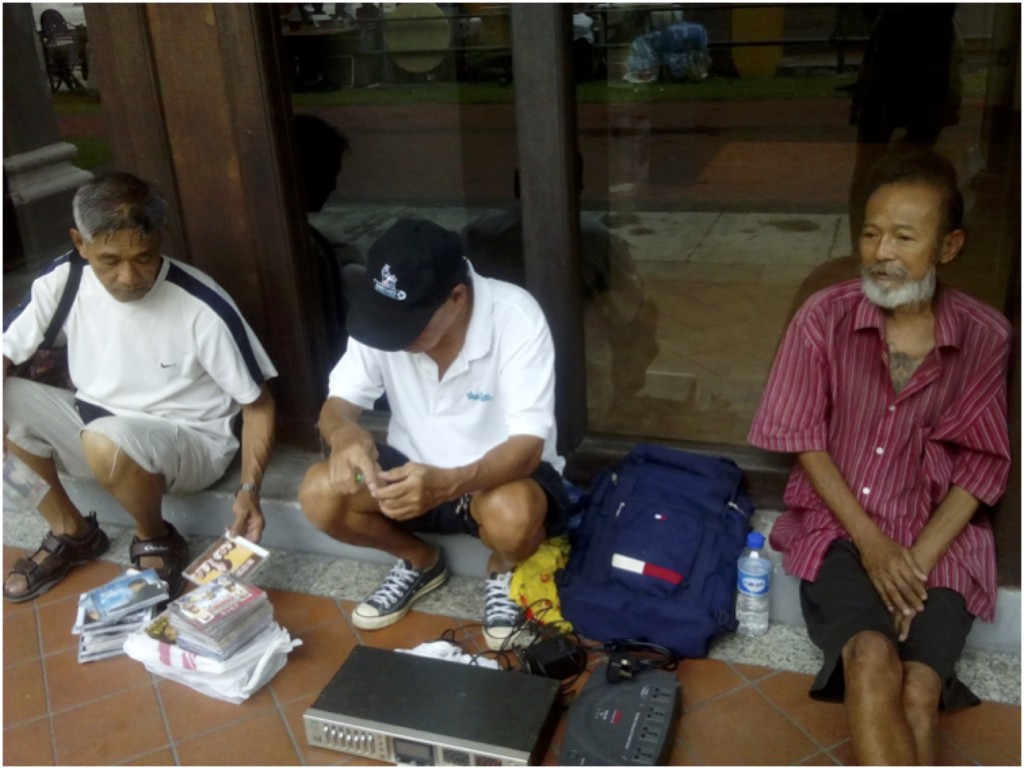Leong Yee Ting (梁毓婷)
I am an 18 year old interning at the Singapore Heritage Society. I am extremely passionate about heritage issues. Other than my involvement in Picturing Chinatown and SHS, I am also designing a tour on Samsui women in Chinatown, working on an exhibition, walk and booklet on Bishan's heritage with friends and participating in a documentary about Dakota Crescent's heritage. I plan to read History at university. 我是个 18岁的年轻人,目前在新加坡传统文化学会 (Singapore Heritage Society) 实习,并对文化遗产保留有极大的兴趣。我除了参与《光影纪实:牛车水旧事新说》和上述协会的活动,我也在计划一个有关牛车水红头巾的导览活动,并与友人筹办一项关于碧山历史的展览以及导览路线与相关手册。此外,我也正在参与一部讲述达科达区历史的纪录片,并计划在大学主修历史。
May 4, 2015
Reclaiming My Connection to Chinatown 重拾我和牛车水的情感联系
I grew up listening to the sound of construction noise. I grew up to a Singapore that was, and is, constantly changing. So it is perhaps natural that my interest in Chinatown grew out of a search for identity, a desire to see and understand Singapore on a deeper and more meaningful level.
我是听着那不断“铿铿锵锵”的建筑声响长大的。我生长在一个无论是过去或现在,都在不断演变的新加坡。因此,在寻找我的身份认同的过程当中,牛车水或许就自然而然成了我感兴趣的对象,并渴望能从中以更深入,更具意义的方式来了解新加坡。
Throughout my engagement with Chinatown, I found myself searching for something elusive, for an “old Chinatown” of sorts, for something more authentic and relatable. Yet I often doubted myself –would such a place mean anything to me? Why is it that I am so interested and protective of the old although I clearly have had no immediate experience of it? Then I realised that it is not about the “old” versus the “new”, but the “authentic” versus the “commodified”. After all, time is like a running stream, and there is no real demarcation between the “old” and the “new”. But I have never really felt whole as a Singaporean, and I’m still looking for my answers to what constitutes the authentic Singaporean experience.
在走访牛车水的过程当中,我发现自己一直在寻觅一种难以捉摸的抽象意境,一种名叫“古老的牛车水”的印象,一种既真实又能在心底有所联系的证据。但与此同时我也在纳闷,这样的牛车水对我来说又具备什么样的实质意义。我没有实时参与牛车水的过去,因此我也很好奇为什么自己会如此执着于这些古早的人事物。
后来,我明白这并非什么“新旧”之争,而是一场关于“纯正”与“商品化”的历史的对峙。时间本来就是漫长的河流,所谓的”新旧“根本无从去划分。但我真正在意的,是我无法对自己的公民身份产生完整的认知与认同,而我还在积极探索什么才是属于我们新加坡人的真切历程。
Ultimately, when I think hard about it, I don’t feel an organic sense of attachment to Chinatown. I am so young, and the histories associated with that place do not belong to me. But beneath the immediate feelings of disconnect, confusion and alienation, I think I have come to a quiet appreciation of the place through the people I associate with it, and a cautious hope that it might mean something real to people of my generation.
经过一番思索后,我发现自己对于牛车水并没有一种根本性的归属感。我年纪尚轻,而那些关于牛车水的历史记忆和我的具体经历是有距离的。但历经了这些抽离与困惑之后,我也逐渐可以更平静地去珍惜我和这些人的相识过程, 并小小的期望这些经历能对我们这一代人有所启发,衍生出更真实的意义。

Picture (1): Chung Hwa Free Clinic—Tension between heritage and redevelopment
图1:中华医院 – 文化遗产保留与重建的拉扯
I felt a deep sense of unease when I took a photo of a cafe located in the former Chung Hwa Free Clinic. The interior was something familiar to me – a hip, modern cafe not unlike those I might visit with my friends. But the exterior stood in stark contrast – the free clinic was established in 1952 to provide medical care for the poor and sick of all ethnic groups. The incongruous interior and exterior reminded me of the tension between heritage and redevelopment, and how the latter seemed to be gaining the upper hand here in Singapore and Chinatown.
当我拍下这张照片时,我的内心是充满不安的。里头的内部装潢设计就犹如时下我和好友们会到访的时髦咖啡厅,不过它的建筑外观却成了鲜明的对比。这里前身是1952年成立的中华医院,专门为各种族的贫苦人士提供义诊。这里的内部与外观是如此的不协调,让我产生莫大的距离感。这也提醒了我文化遗产在保留与重建之下的拉扯与挣扎,而后者又是如何在岛国与牛车水逐渐占了上风。

Picture (2): Shophouses seem to be merely pretty things
图2:战前店屋似乎仅沦为漂亮的建筑物
Another photo depicts some well-preserved shophouses opposite Hong Lim Complex. This angle and the colour capture my sense of alienation; Chinatown feels like a place I do not, and perhaps cannot ever, understand fully. I grew up in an age of high-rise flats and air-conditioned buildings. And even if I wanted to try to probe deeper into it, the current preserved shophouses seem to be merely pretty things, while the soul of the place has been eroded by commercial pressures. It seems as though the concept of Chinatown, the area centering around Chinatown MRT at Pagoda Street, Temple Street, Cross Street and South Bridge Road, for someone from my generation, holds a completely different place in our cultural memory. To someone of the previous generation, Chinatown is “gu chia chwee” (“bullock cart water” in Hokkien) with its “da po” ( “greater town” in Mandarin, or area south of the Singapore River) and “xiao po” (“smaller town” in Mandarin, or area north of the Singapore River), and various colloquial names for different streets in dialect – names that I, a non-dialect-speaking eighteen-year-old, can’t even understand.
照片中是芳林苑对街被完整保留的店屋。这样的角度与这样的色彩,再次让我感到疏离。牛车水就像是个我永远也无法真正了解的地方。我在高耸的组屋与满室冷气的建筑物中长大,而这些店屋对我而言是如此陌生。即使我想深究其中的历史,眼前这些受保留的店屋似乎也仅是漂亮的建筑物, 其灵魂已被那些商业化发展取而代之。
那些在牛车水地铁站邻近的宝塔街、登婆街、克罗士街和桥南路,对我们这个年代的人来说,成了我们对于”牛车水“的认知,在我们的文化记忆中有着不同的位置。但对于上一代的人来说,牛车水的记忆就真的包含了载着水的牛车,还有 “大坡” 和 “小坡” 的回忆。(前者为新加坡河南端一代,后者为新加坡河北端一代。)此外,还有许多口语化的方言街名,这些都是十八岁的我,一个对方言感到陌生的我,无法理解的。

Picture (3): What it is like to grow old in a rapidly changing landscape in Singapore–particularly in Chinatown?
图3:在日新月异的新加坡,对于这些在牛车水慢慢年老的人又是什么滋味?
I took a photo of an old man lying down at a staircase because it depicts a raw slice of life in Chinatown today. The old man is passive and tired, but he’s comfortable with this place. It made me think about the elderly in Chinatown – what it is like to grow old in a rapidly changing landscape in Singapore? For them, Chinatown may be close to the heart but it has been altered greatly to cater to tourists and expatriates. Alongside such scenes of sleeping elderly were others of tourists photographing each other next to sculptures of daily life in a Chinatown long gone. These sculptures in Chinatown make me feel like history has come to a standstill, like the old man in this photo.
我选择拍下这张照片,因为我觉得当中刻画出牛车水的原始面貌。照片中的老伯是疲惫且被动的,但他却仍然如此怡然自得。这让我想到那些在牛车水居住的年长者: 在日新月异的新加坡逐渐成为所谓的“乐龄”人士是什么样的滋味? 尤其居住在在一个如此贴近自己过往生活的牛车水,如今眼看它一步步变成为旅客和白领外籍人士而存在的地方,这当中又夹杂着什么样的感受?一面是老人们在街边熟睡,另一面则是观光客在那些展现早已消失的牛车水生活面貌的雕像旁拍照留念。这些交错的画面,让我仿佛感受到历史进入了静止状态,如同照片中的老伯一样。

Picture (4): Men selling second-hand goods on the street remind me of hawkers that used to line the streets of Chinatown
图4:在街上卖二手货的他们,让我想起早期牛车水的街头摊贩
I took another photo of second-hand goods street vendors, with makeshift stalls at South Bridge Road. One of vendors shared that usually on a Saturday, the whole area would be lined with such stalls. It just so happened that I had come on a day of Lee Kuan Yew’s lying in state, hence there were fewer stalls. As I chatted with them, I recalled the makeshift vendors and hawkers that used to line the streets of Chinatown – a large part of its “original” identity. It was also during this conversation that I realised I could cultivate a personal connection to this place, through my own interactions with the people there. When I think of the meaning Chinatown holds for me, I remember the conversations and walks more than the history books and academic articles. So perhaps the entire character of the place has evolved greatly, but it is still a place that I can reclaim. Younger Singaporeans can continue to stake claim through simple conversations and more mindful experiences of spaces over time. This task seems rather daunting, but I think this is the best and perhaps only way to cultivate a sense of belonging – personal, ground-up experiences.
这张照片是在桥南路拍摄的。那里有好些临时摊位,而这些先生们都在售卖二手物品。其中一位便与我分享,这里每周六都会排满售卖二手货的摊位。由于我到访当天,恰逢建国总理李光耀逝世的那一周,因此聚集的摊位比平时少。在聊天的过程中,我想起那些早期在牛车水叫卖的街头摊贩。或许现在的二手市集就是当时的缩影吧。
我也在聊天时发现,通过我和这些人的交流,我可以从中找到属于自己和这片土地的联系。当我回想起牛车水对我的意义时,我记得的是那些实际步行过的旅程和那些对话,而不是那些官方书籍和学术文章所记载的。或许一切已时过境迁,昔日的牛车水特色也有了彻底的改变,但我仍旧能用属于我的方式重拾对于这里的情感联系。
年轻一代的新加坡人,可以通过深入且有意义的走访,逐渐找到对于这片土地的认同。也许这听起来会让人怯步,但我认为这是唯一,并且也是最佳的方式,以个人的实际体会,培养那份归属感。
译/陈玉能












